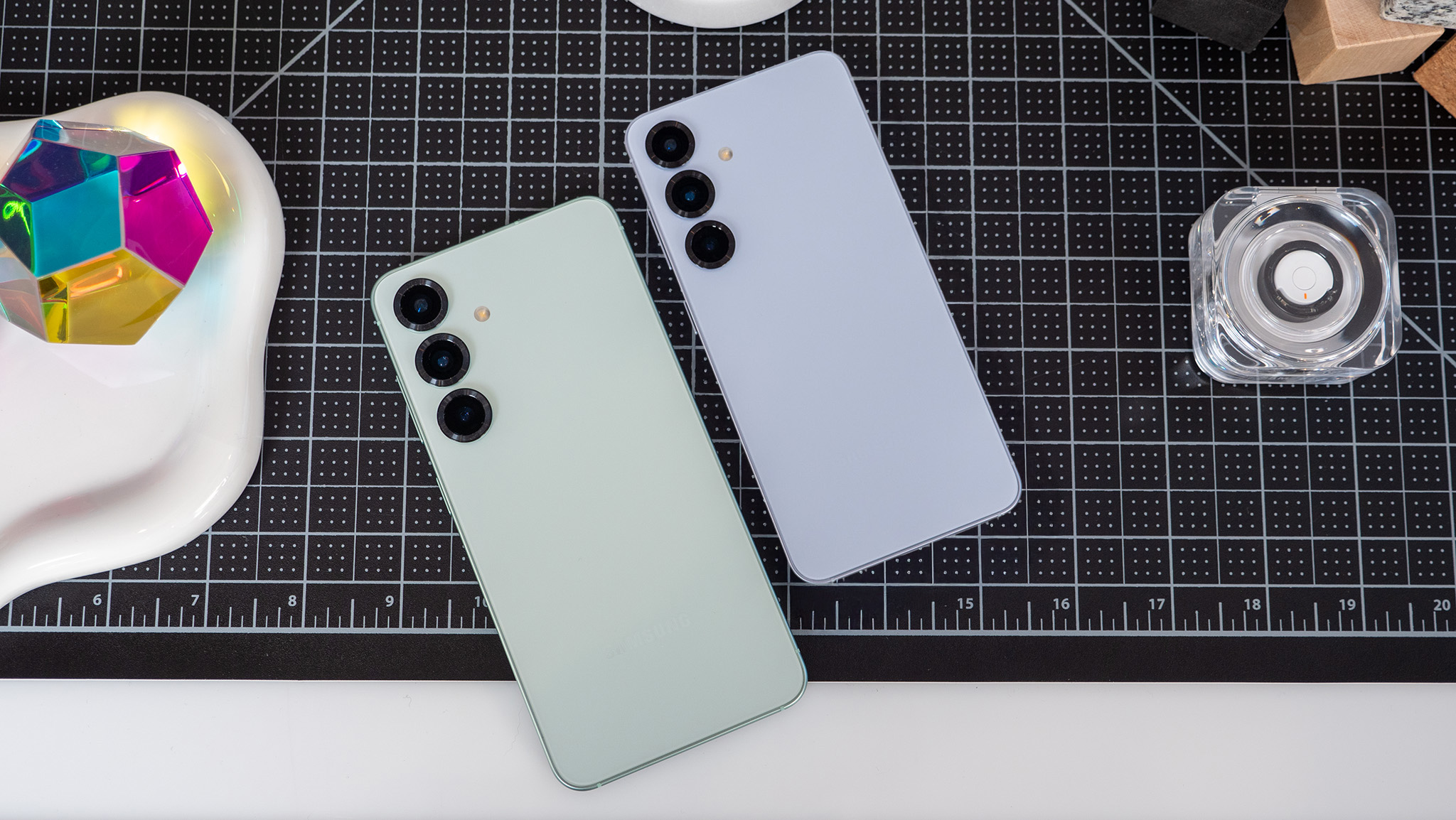
If you thought you had heard the end of “the era of AI” for new smartphones, think again. The Samsung Galaxy S25 lineup pushes the envelope for more AI features than ever, but this time around, Samsung has been careful to engineer all three phones around delivering quality, actionable information without going to the cloud first.
Samsung calls this new model a new, more personalized Galaxy AI and even says its new phones build a local LLM customized just for you and how you use your phone. As if that wasn't already great, Samsung improved the amount of RAM on its base Galaxy S25, ensuring that every user gets the best new AI technology, regardless of which size they choose or what budget they have.
From personalized morning and evening briefings to new tools that let you search for and modify just about everything on your phone, the Galaxy S25 and Galaxy S25 Plus are all about delivering excellent long-term value without a price hike. Our Galaxy S25 Ultra hands-on also shows off the newly redesigned higher-end model if you're interested in that.
If I have one takeaway from my time with the Galaxy S25 and Galaxy S25 Plus at a special event in New York, it's that both phones deliver AI you'll actually care about and use daily. That's something I can't say about last year's models.
Samsung Galaxy S25 and S25 Plus: Price and availability
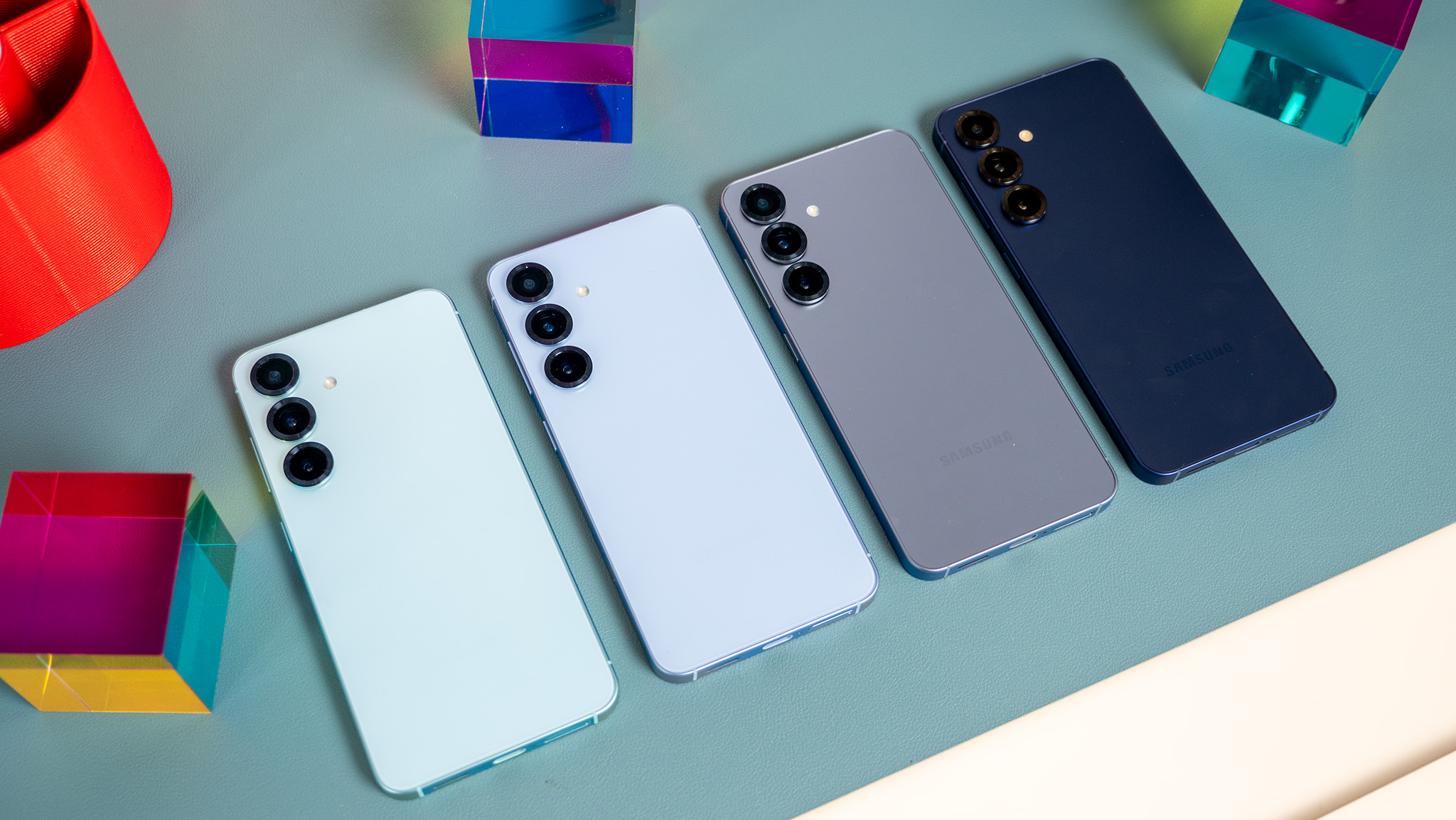
The Samsung Galaxy S25 launches at $799 and can be had in seven different colors. The first four, Icyblue, Navy, Mint, and Silver Shadow, are available at your favorite retailer or carrier of choice. Ordering from Samsung.com gives you three additional options to choose from — Blue Black, Coral Red, and Pink Gold — plus a slew of launch promotions that'll save you some serious dough.
The Samsung Galaxy S25 Plus bumps up the size and starts at $999. It comes in all the same color choices as the base S25 — including those Samsung.com exclusive ones — as well as the same RAM and storage options. The main reasons to choose the Plus model are the larger display and larger internal storage options. Otherwise, both phones are nearly identical.
You can preorder both models now and there are plenty of deals that bring the price of both phones much, much lower!
Samsung Galaxy S25 and S25 Plus: Software and AI
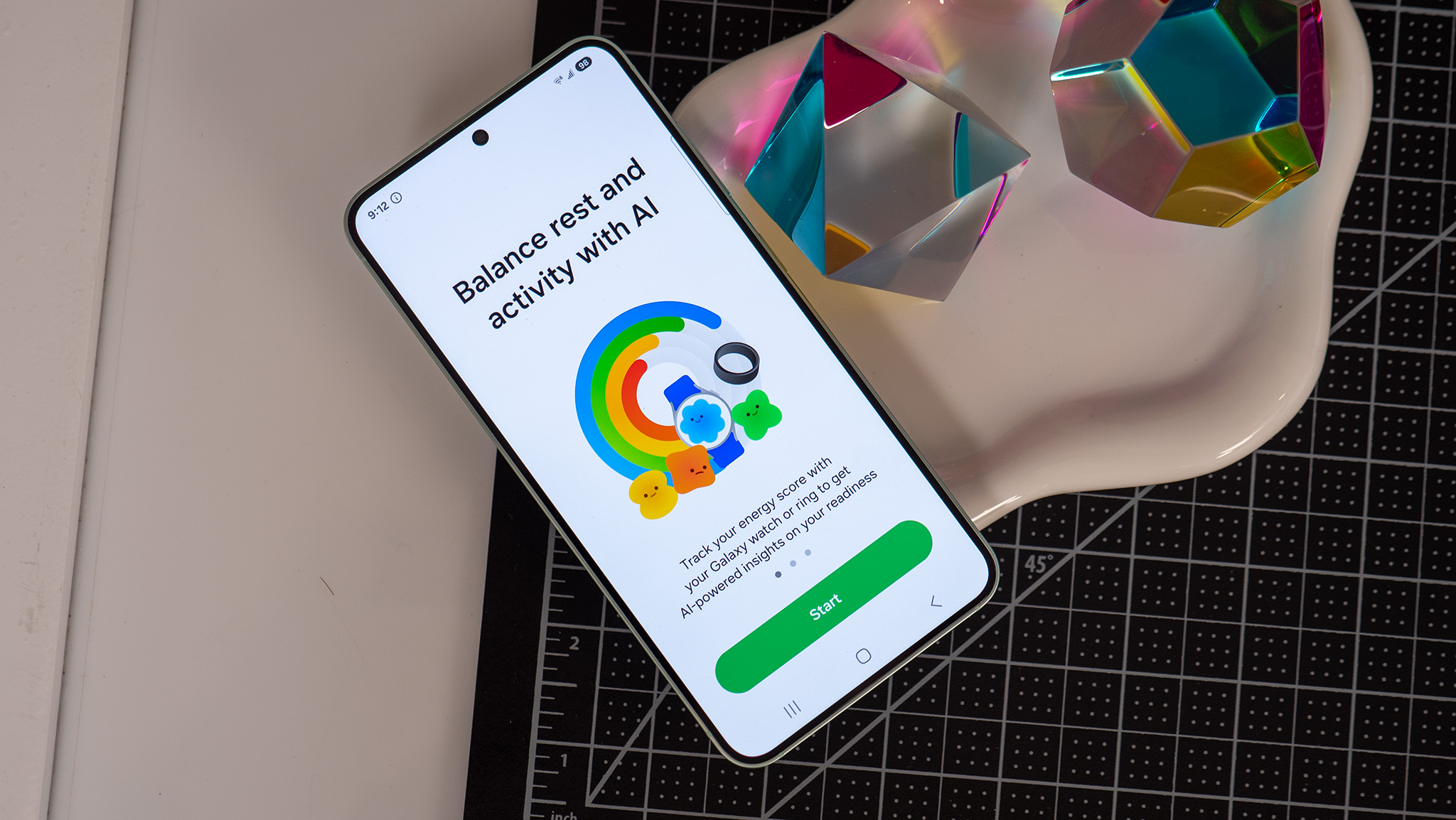
For the first time, all three Samsung Galaxy S25 models feature the same amount of RAM. This is to ensure that all AI tasks perform identically across every device in the line and makes the Galaxy S25 and Galaxy S25 Plus look more attractive than ever.
While many of last year's Galaxy AI features were only great for a few niche situations, this year's new Galaxy AI features are ones that most of us will begin to use every day. Samsung breaks down the new features into three main categories: AI Agents, an integrated AI platform, and personalized AI.
The first AI feature you may find is when long-pressing the power button, which now brings up the AI Agent display. This displays what appears like a redesigned Google Assistant UI, but changes a bit depending on the app on-screen.
If you're watching a video on YouTube and pull up the AI Agent, two new buttons appear: "Talk Live About This," and "Ask About This Video". The AI Agent can watch the video for you and pick out key elements, then drop these ideas into a note.
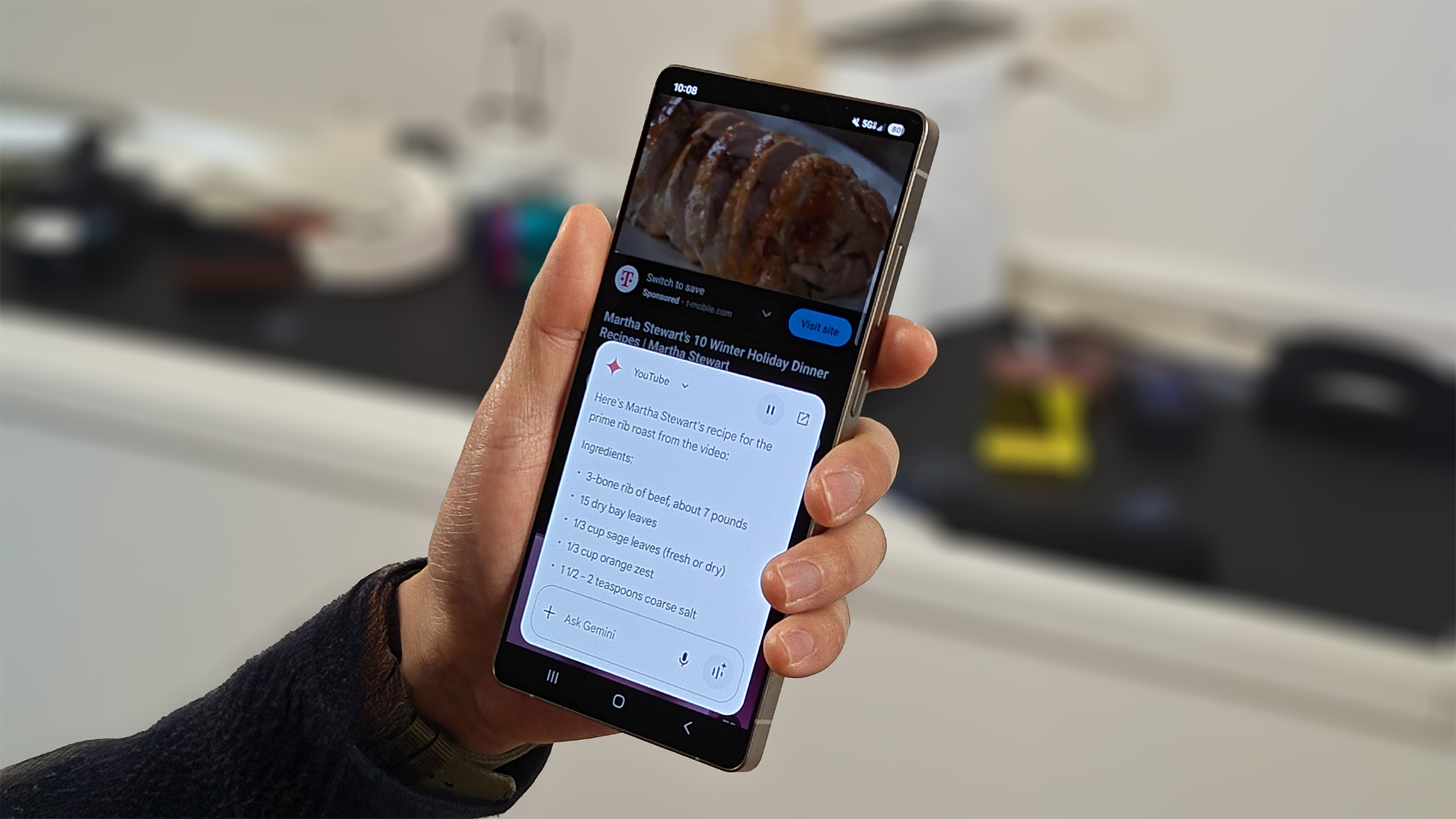
AI Agents can summarize videos nearly instantly and enable a slew of context-sensitive actions on any video, image, or text.
In one example, we pulled up a cooking video on YouTube and asked it to show us the recipes inside. We then asked a follow-up question to get the exact recipe of one of the mentioned ideas in the video. Each of these prompts was followed by a few seconds of processing time while the AI Agent connected to YouTube, which was impressive considering the video was over an hour long.
In another example, the AI Agent was asked to “find vegan restaurants around me and text them to Peter.” Just 5 seconds later, the Gemini-powered Agent returned five results with each address and asked to confirm sending the message to Peter.
It's important to note that if you ask it to find something and make a note, it'll automatically make the note with the information it found. Asking it to find something and send a message will always ask for confirmation.
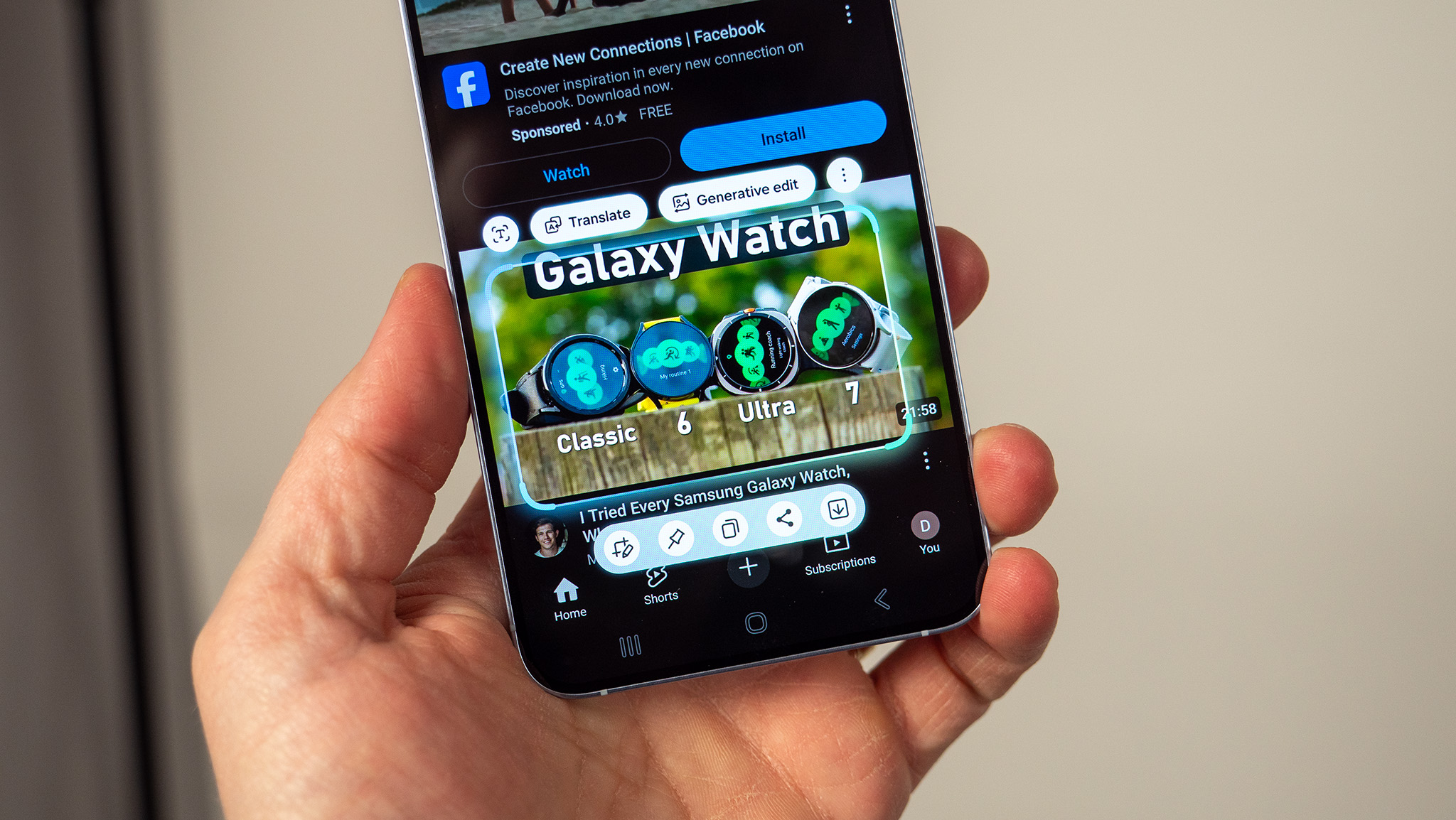
AI Select lets you extract text from images, get generative suggestions, turn a video into a GIF, and more.
This search feature can be used for all Google and Samsung apps, plus Spotify and WhatsApp at launch. That means you can ask it to search for your upcoming flight in Gmail, and it'll be able to do it. You can even do complex queries like “find the next Chevelle concert, add it to my calendar, and text my wife.”
You can also now use natural language search in the settings app, gallery app, and a few other places. This lets you easily find photos or videos from a specific place or moment in time using more natural language. It can also bring up settings so you don't have to bumble through the settings menu to find what you're looking for.
Another extremely useful new feature is AI Select, an upgraded version of the once S Pen-exclusive Smart Select feature that adds actionable information to the things you highlight on the screen. The UI is very similar to Circle to Search, but instead of returning search results, you'll be able to extract text from images, get generative suggestions, turn a video into a GIF, and more.
It works on all images, videos, and text in any app, and Samsung says it won't interrupt your workflow, unlike similar features in the past. That means apps like Instagram won't reload and refresh your feed just because you want to look up something.

Now Briefing feels a lot like the Google Now feed of yesteryear, and I'm not sure that's a good thing.
The last big new feature set is Personalized AI, which I think is a collection of hit-and-miss ideas. A morning briefing on your day will appear on the lock screen and the new default widget on the home screen, giving you a quick catch-up on the weather, your calendar, and any other events it thinks are pertinent. You'll receive a similar daily summary at night, although I didn't see this one because my hands-on session was in the morning, and it didn't have anything to summarize.
Personalization is key here because, without it, the briefing screen is pretty devoid of info. A lot of this reminds me of the old Google Now screen that apparently no one used because Google got rid of it. We'll see if the same thing happens with Samsung.
It's not all superfluous, though, as this same technology can be used to automatically create routines based on how you use your smart home or when you commute to work. Routines are super cool, but I've never bothered to use them because they are too much work to make and plan out. The Samsung rep giving the presentation said the same thing, funny enough, so I know I'm not alone.
Samsung Galaxy S25 and S25 Plus: Display and design
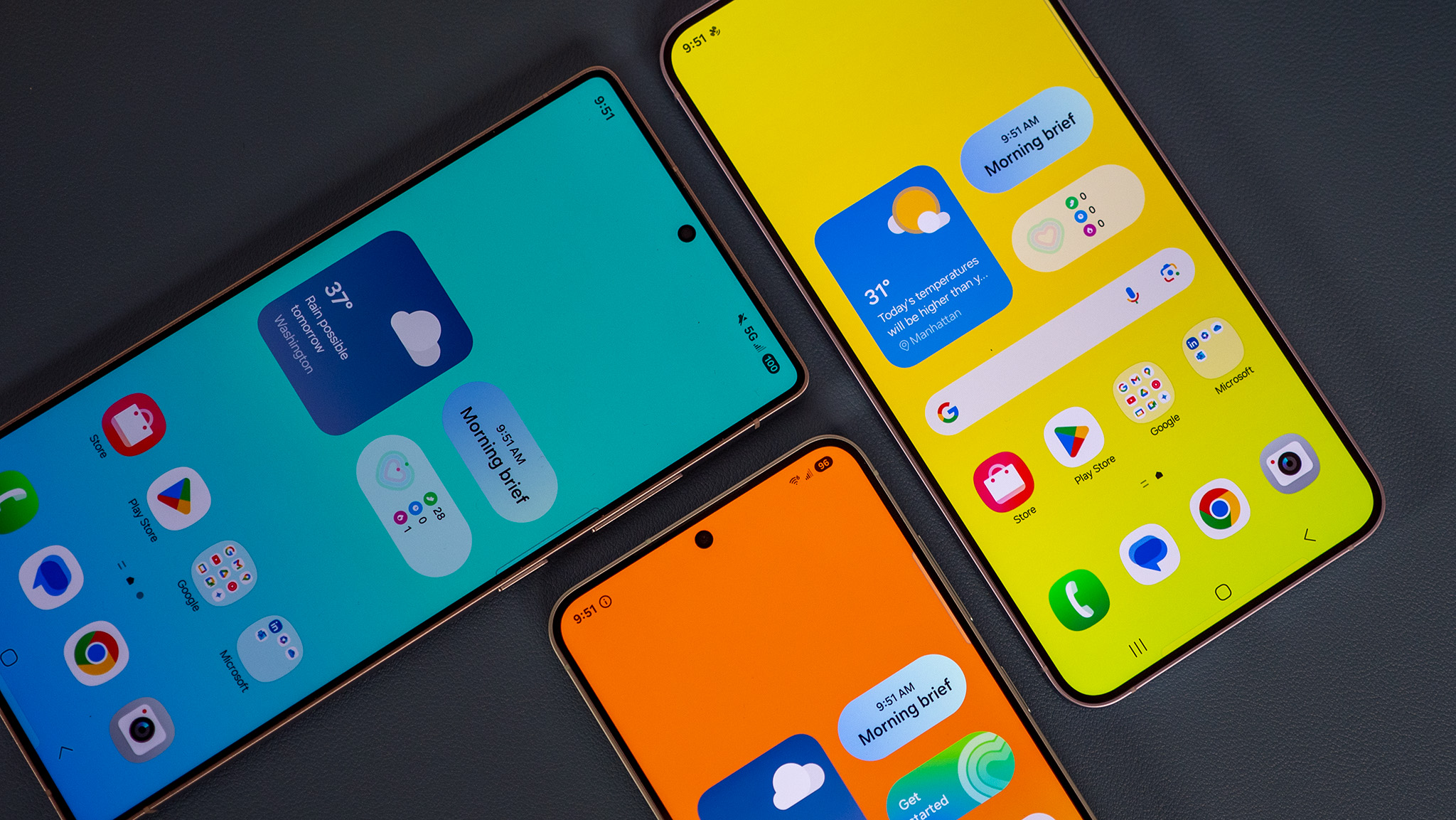
Both the Galaxy S25 and Galaxy S25 Plus look pretty similar to last year's phones, but that doesn't mean there's no improvement. The rails around the entire phone are totally flat, with curved corners designed to make the phone more comfortable in your palm. Each colorway has its own matching colored rails, which sport a nice matte texture.
The front and back glass are also 100% flat, making it easy to slap a screen protector on in no time flat. The bezel around the displays of both models has been slightly reduced, and both models are lighter, as well. That's 6g less for the base Galaxy S25 and 7g lighter for the S25 Plus compared to their equivalent S24 models.
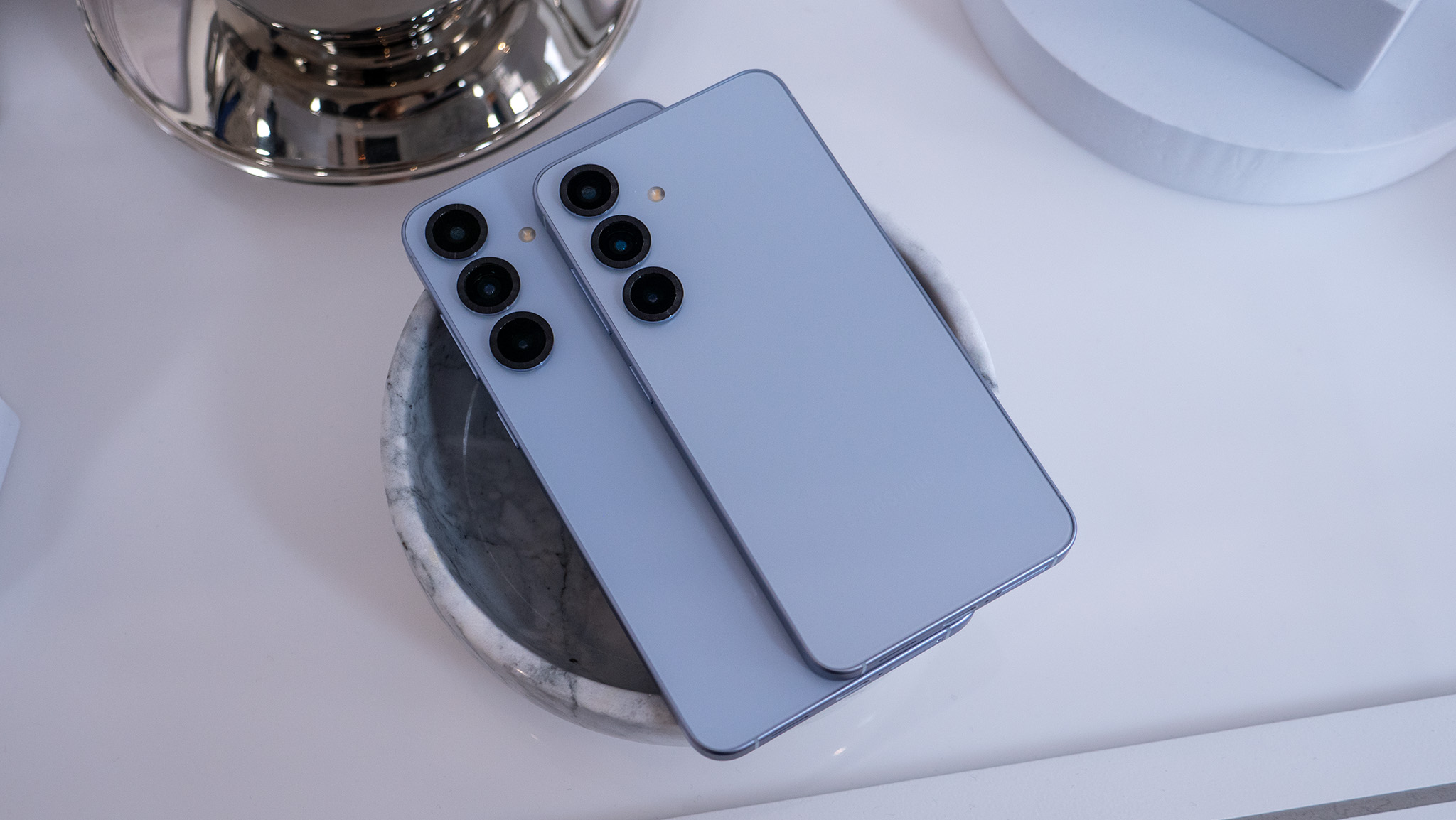
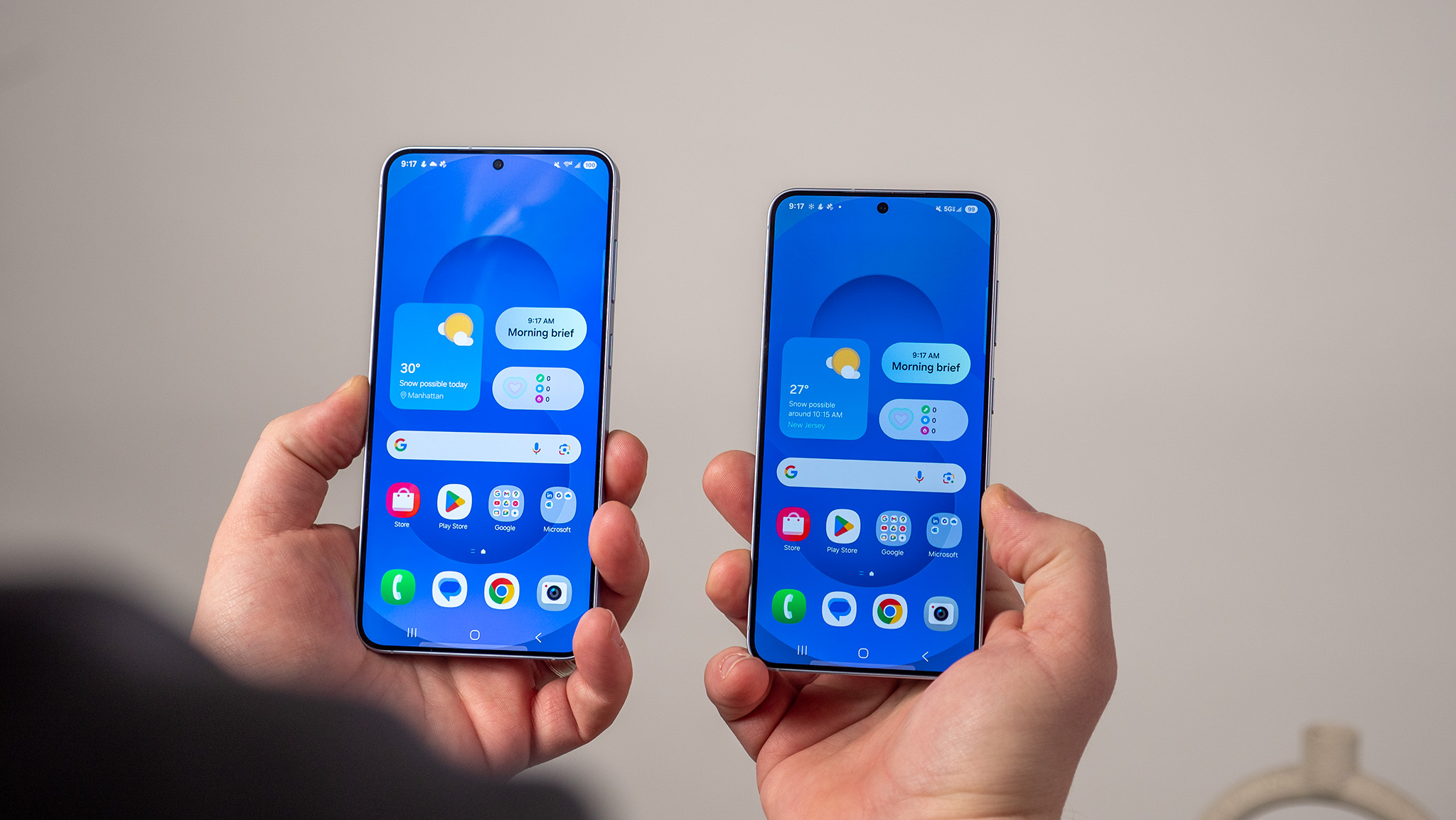
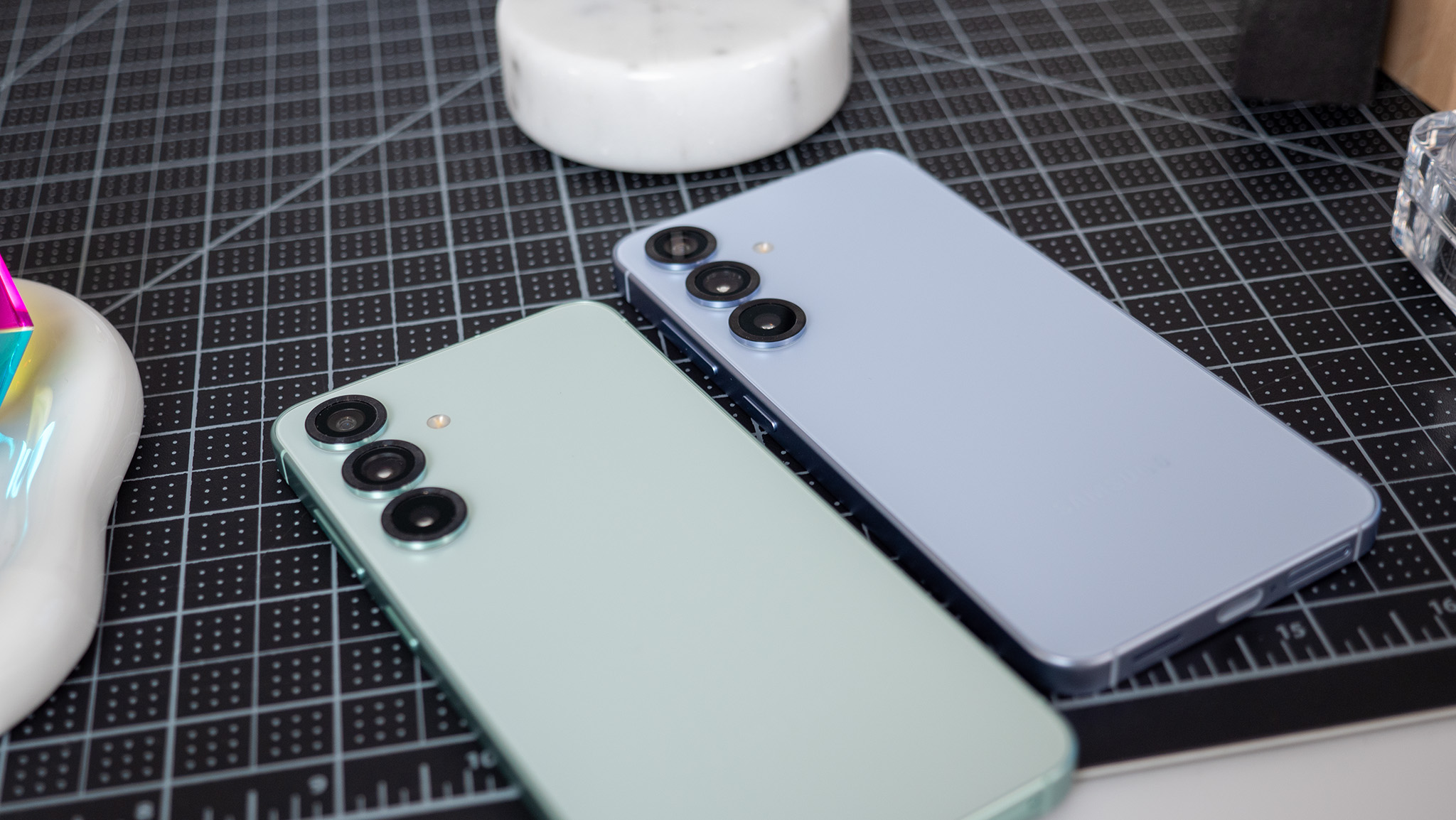
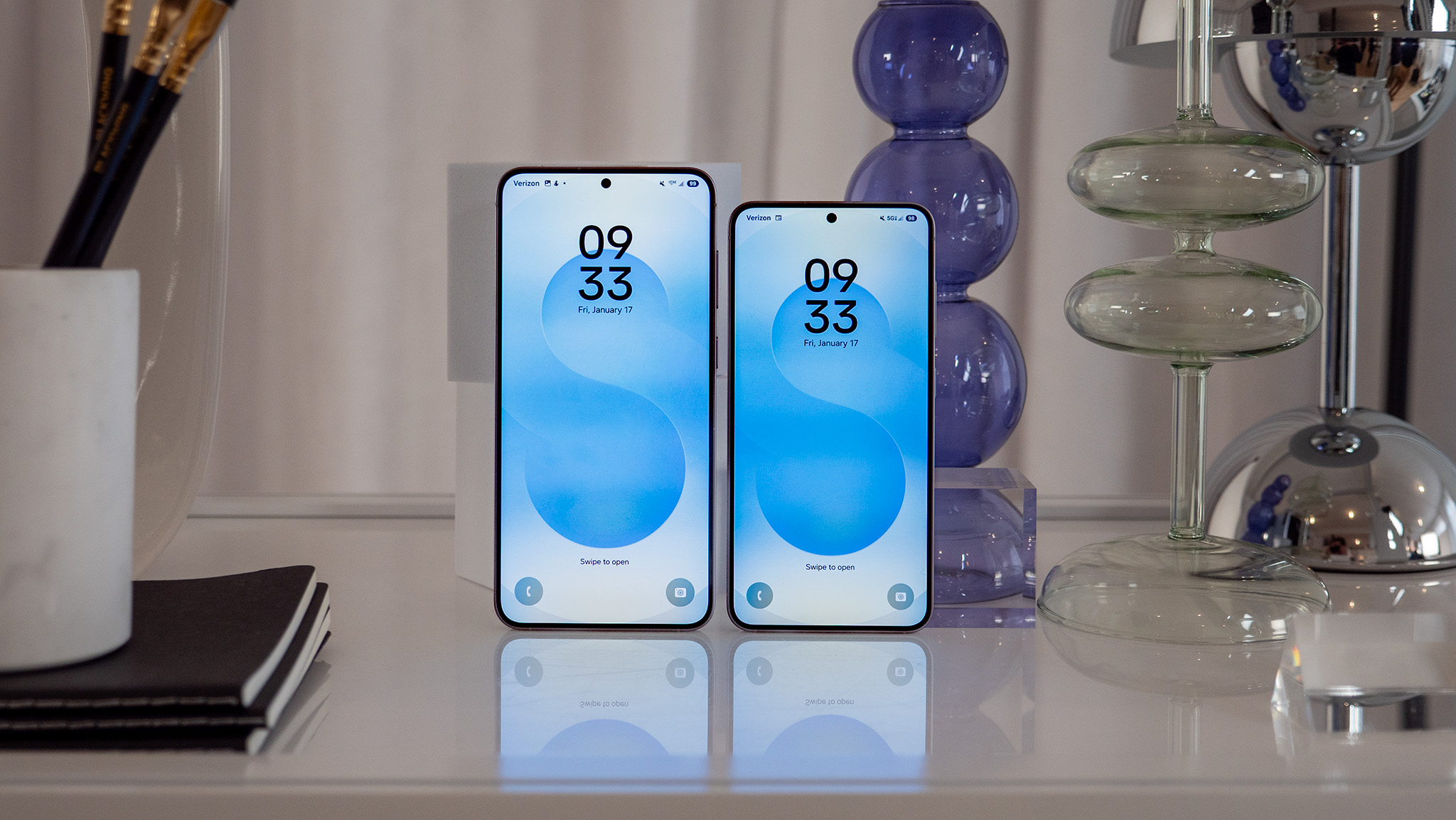
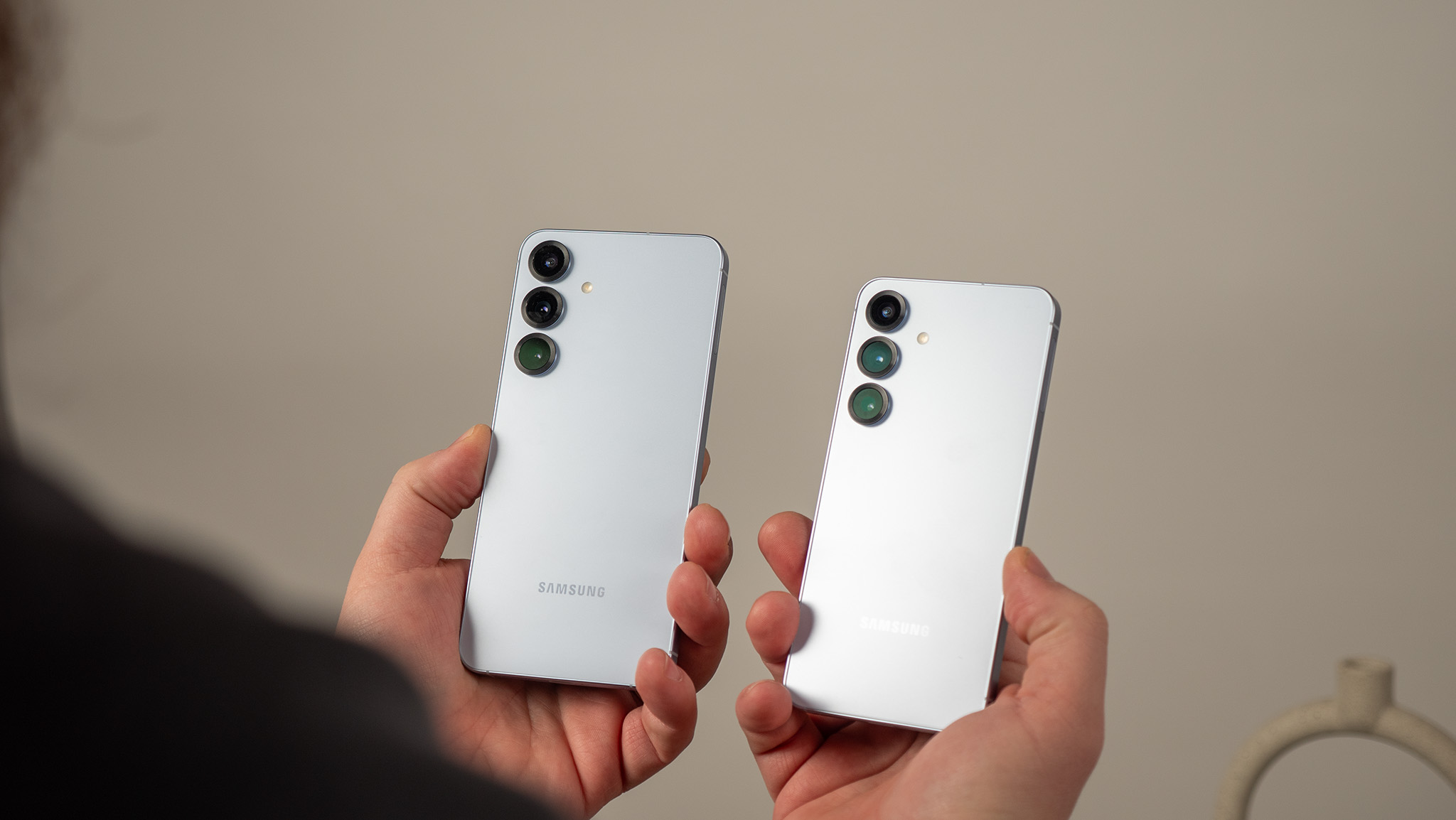
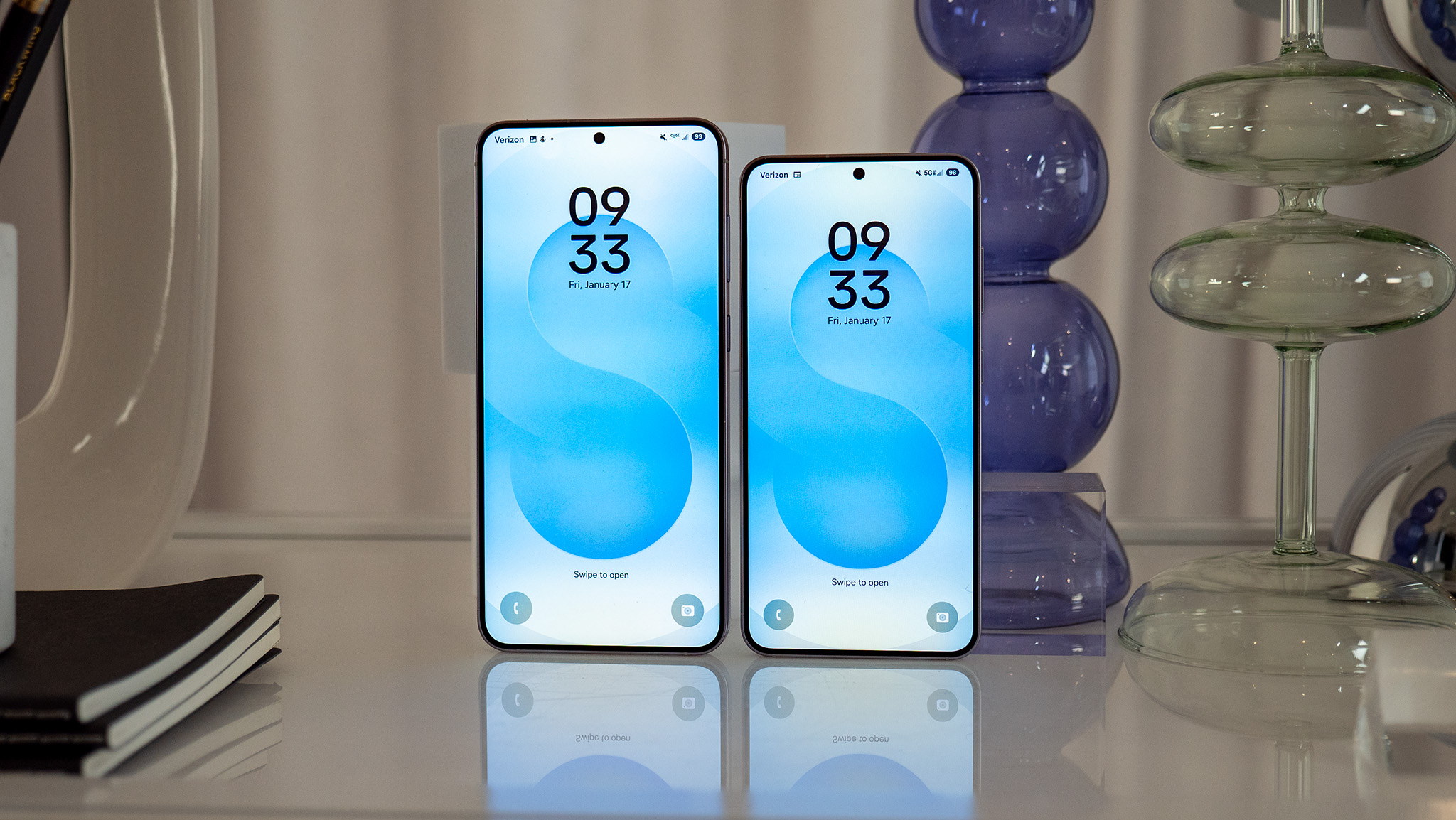
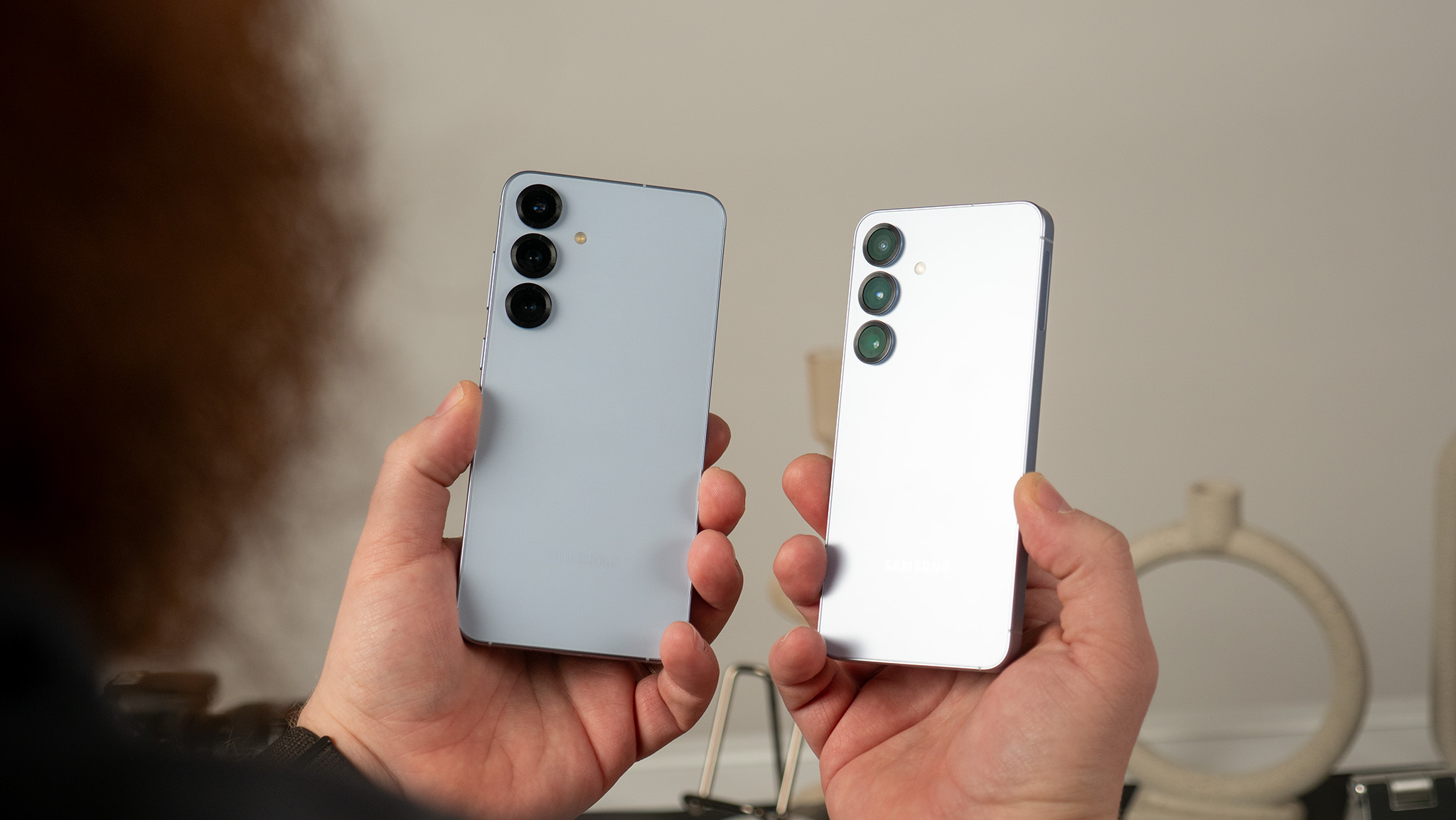
Both models are slightly lighter despite no change in battery size.
The raised camera lenses on the back have been ruggedized a bit with thicker outer layers that look rather nice on top of the flat glass. This won't fix the wobble you'll get when putting the phone down on a table, but they should help protect against lens breakage if you drop the phone.
These displays don't feature any meaningful hardware improvements or changes over the ones found on the Galaxy S24 family. Both models use a 480hz PWM rate with no option to disable PWM at high brightness in favor of DC dimming, as most other Android flagships now offer.
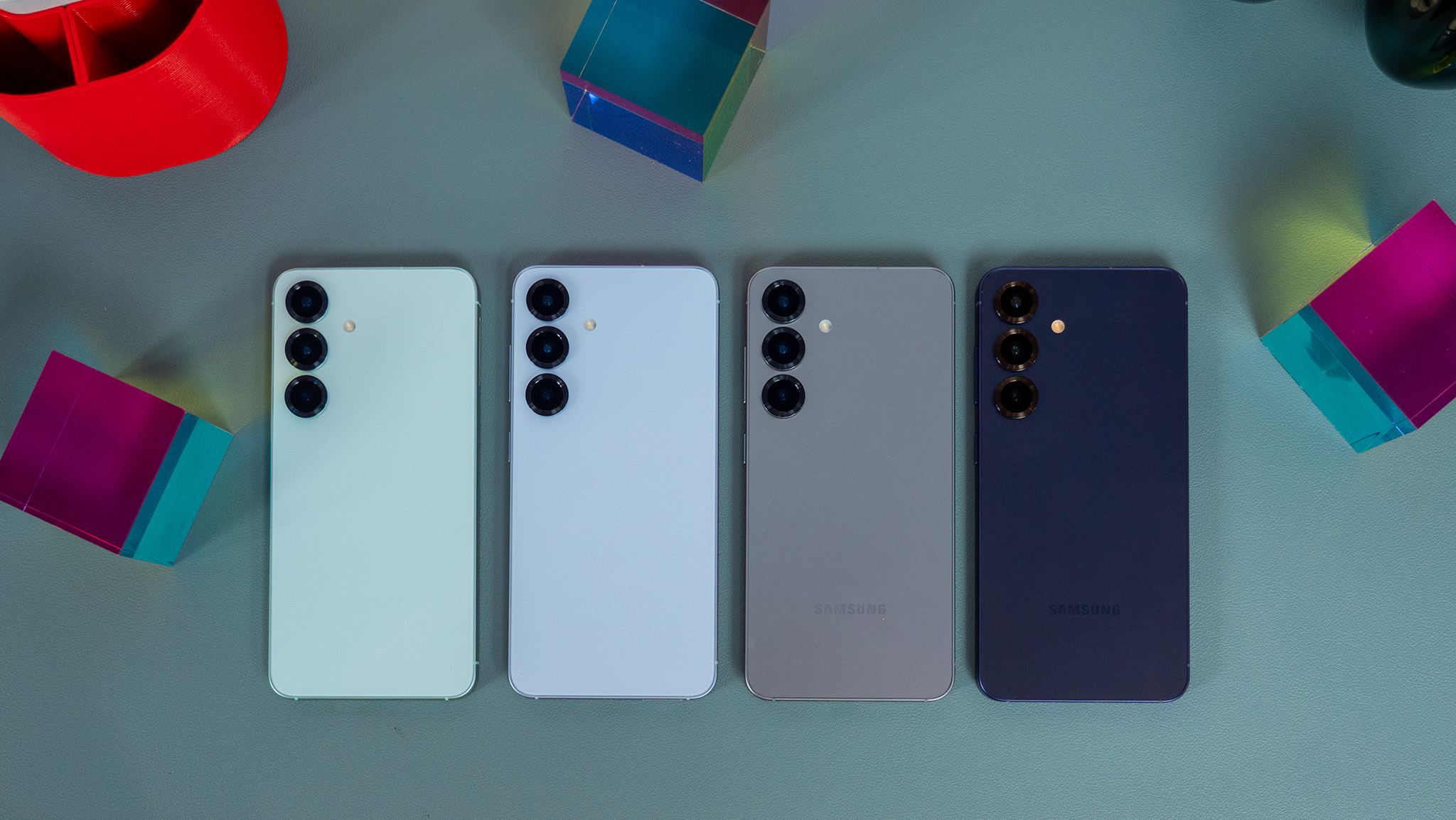
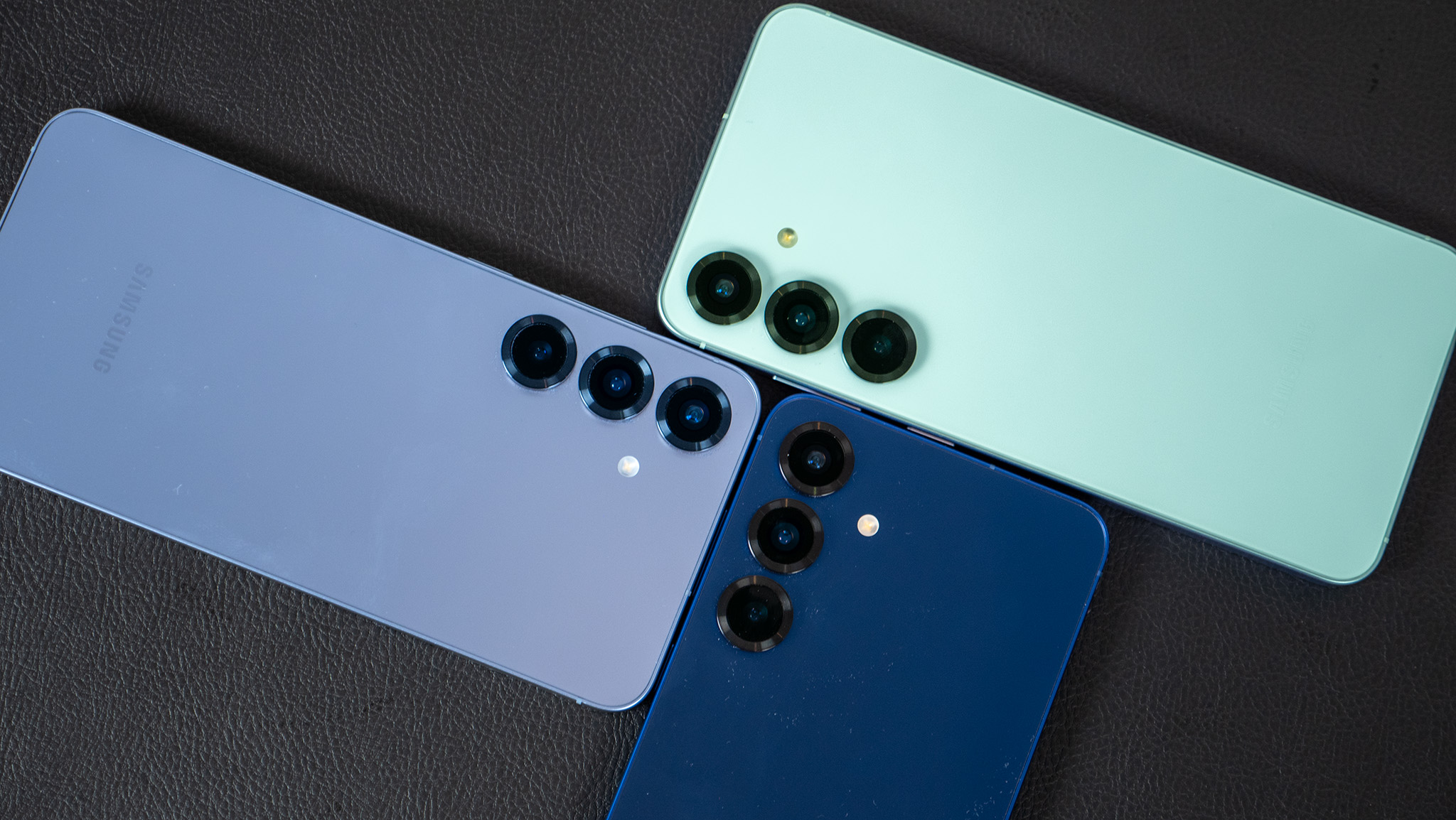
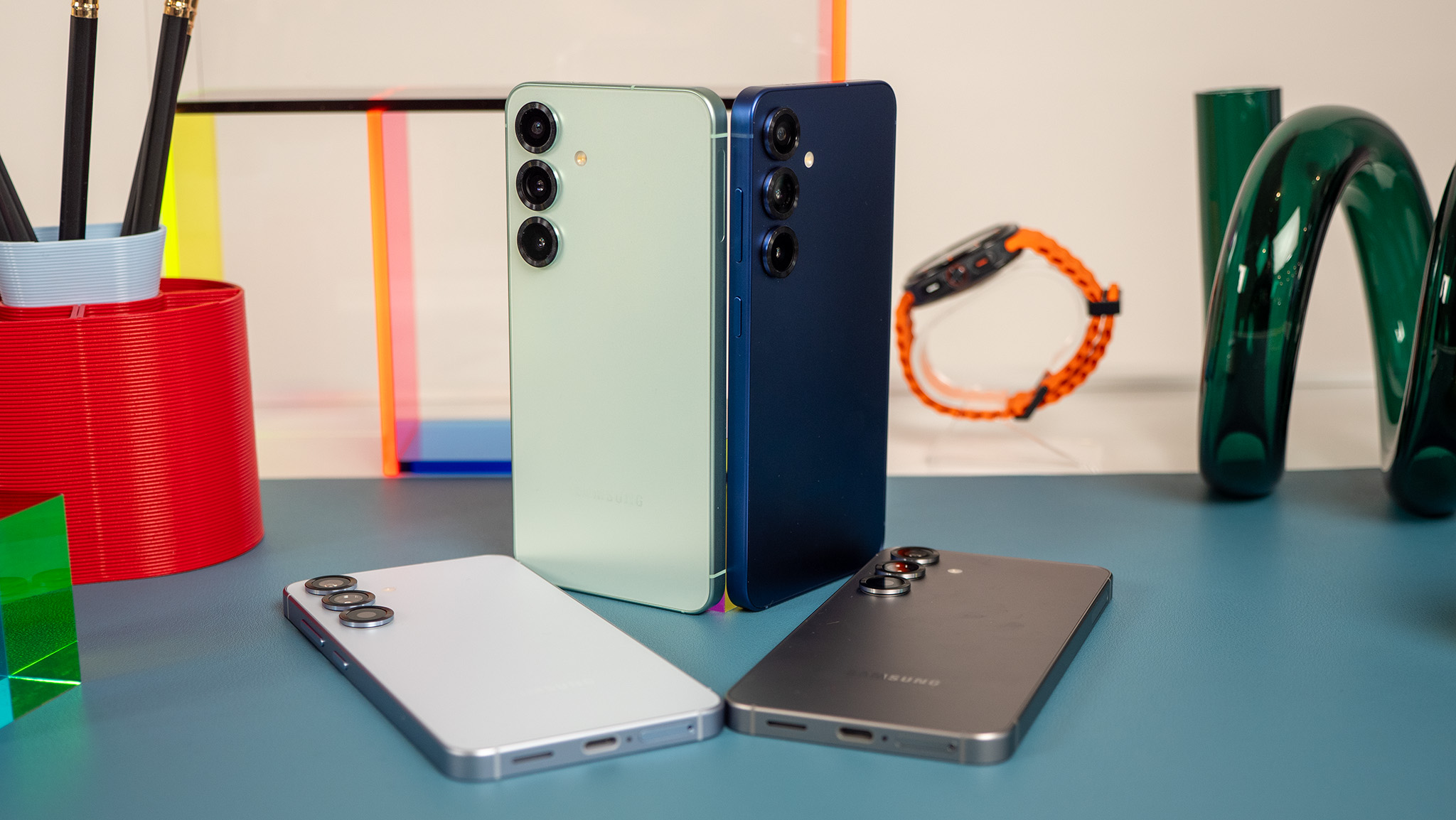
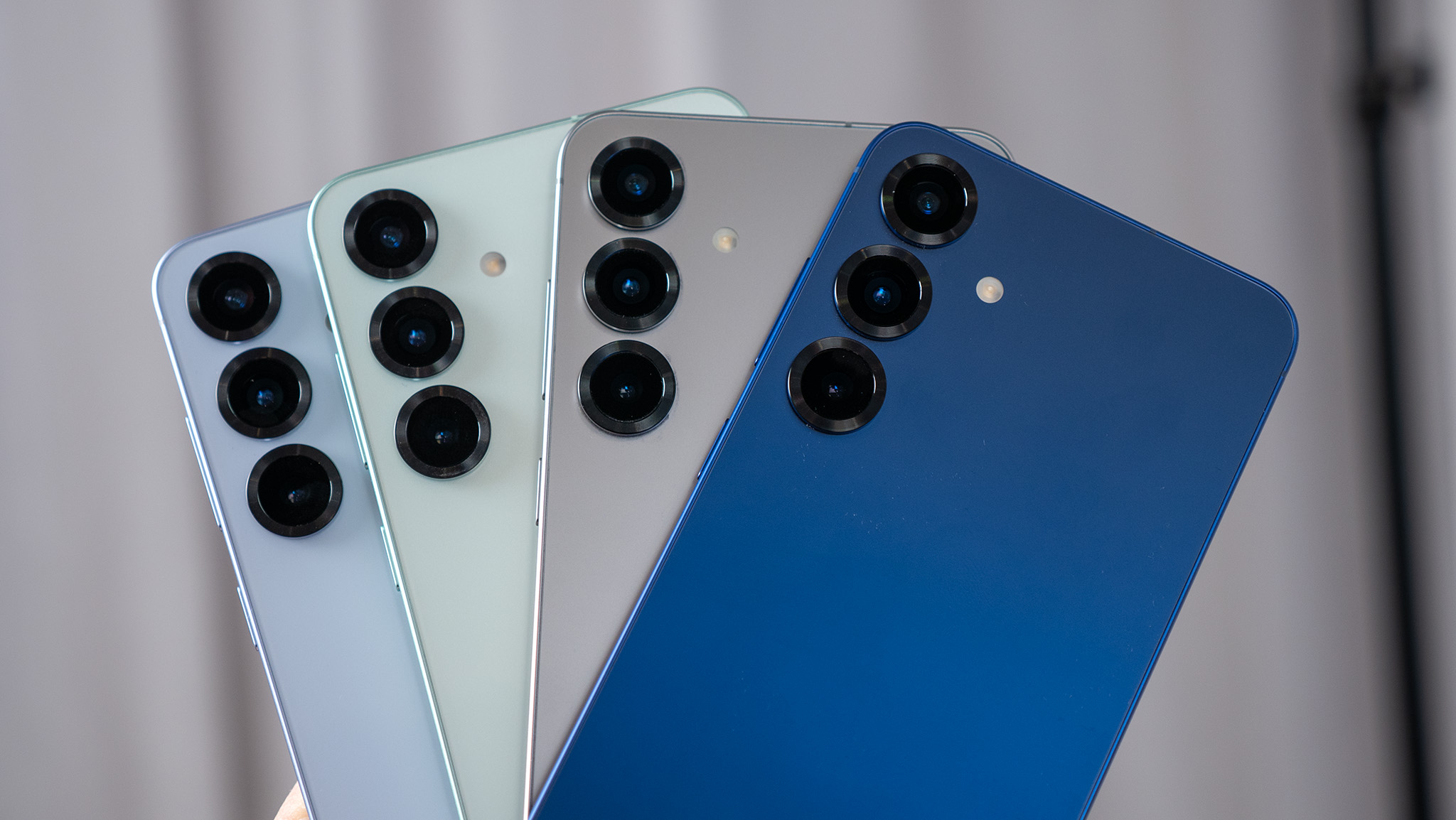
Samsung didn't detail any display enhancements or new eye health features, and the anti-glare coating is only available on the Galaxy S25 Ultra.
Samsung did include its Proscaler engine from the company's TV line, however, which automatically converts all video and photo content to match the phone's display resolution. This feature cannot be turned off and runs no matter which resolution you choose for the display. Samsung says it should make everything pop like ever before, but we'll need to test those claims in the review.
Neither the Galaxy S25 nor Galaxy S25 Plus have the anti-glare coating that's applied to the S25 Ultra.
While the glass isn't different from the S24 line, Samsung pointed out that it is better than what was offered on the Galaxy S23 and older, citing that the company saw a 60% reduction in screen repairs for the S24 versus previous generations of Galaxy S devices.
Samsung Galaxy S25 and S25 Plus: Specs, performance, and battery
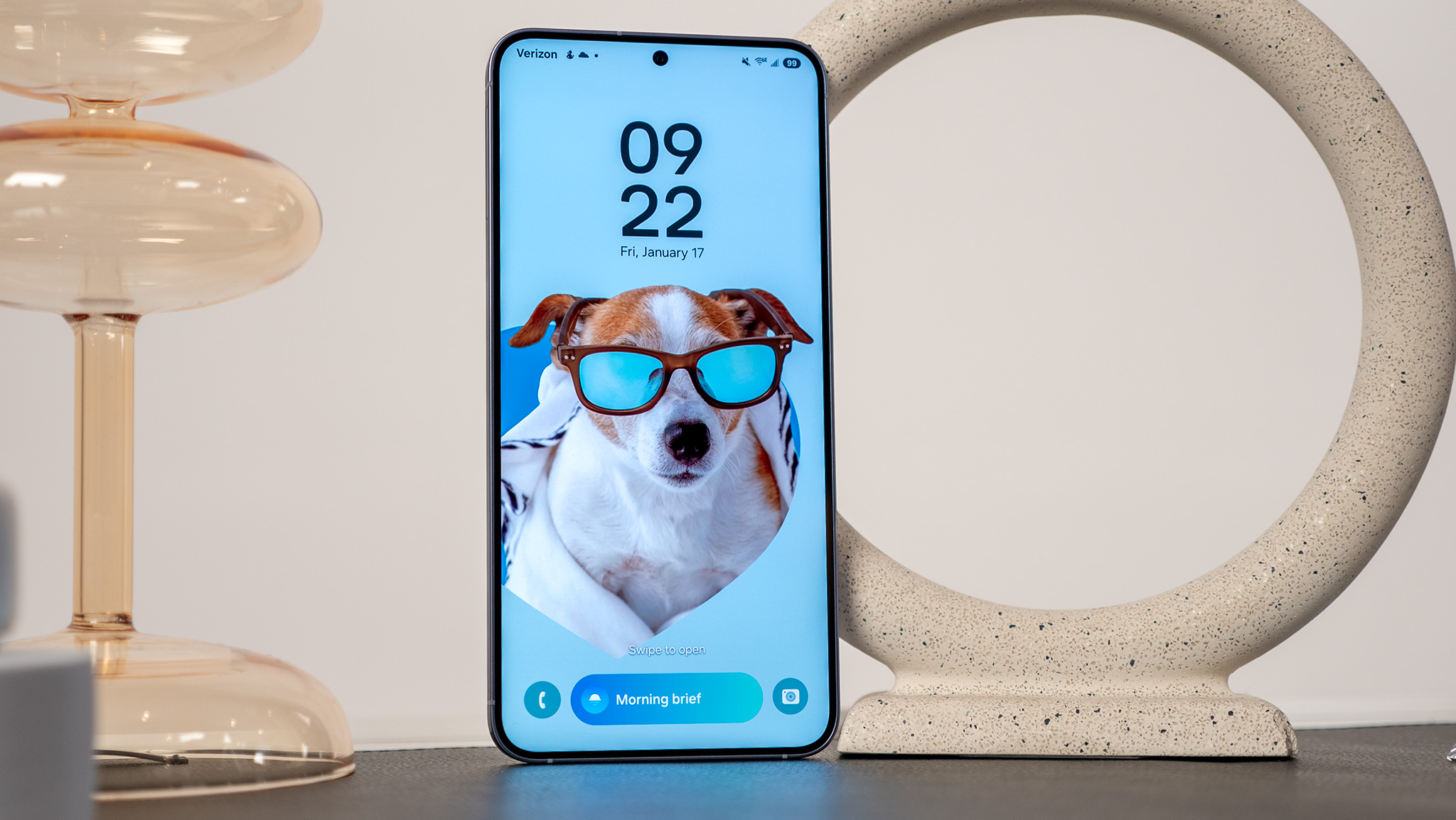
The Galaxy S25 and S25 Plus feature a handful of spec improvements over the S24, but they're mostly minor improvements. The lone exception is the Qualcomm Snapdragon 8 Elite for Galaxy processor which sports a huge jump in performance.
Users can expect huge speed boosts when coming from any previous Galaxy phone, particularly anything S23 and older. This processor boasts 40% better NPU performance — that's mainly used for AI processing — as well as a 37% CPU and 30% GPU performance upgrade.
While these numbers usually equate to a very hot phone, Samsung said it not only increased the vapor chamber size on the Galaxy S25 and S25 Plus by 15% compared to the S24 line, but the company is also using a new Tailored TiM layer for extra thermal efficiency. In short, that should help pull more heat away from the processor and out of the phone instead of slowing the phone down when it's busy.
In terms of real-gaming world performance, Samsung says that this new processor is 40% better at processing ray tracing, and any games that use Vulkan will see a further 18% performance improvement over the S24 line.
Samsung has upgraded Knox this year, now including upgraded encryption methods and what it calls “post-quantum encryption” that's designed to guard against future quantum computing attacks.
Better encryption is vitally important now that you're carrying around an entire LLM on your phone, helping to ensure that all that personalized data built around you stays local to your phone.
Battery life improvements this year will be found solely in efficiency improvements of the processor, as there are no display or battery size changes over last year. Additionally, Samsung hasn't made any changes to the charging speed or capabilities. That, unfortunately, means no Qi2 MagSafe charging built into the phones.
The company didn't have any cases or accessories for us to test at the event, so I can't speak to the capabilities of what Samsung may offer there.
Samsung Galaxy S25 and S25 Plus: Cameras
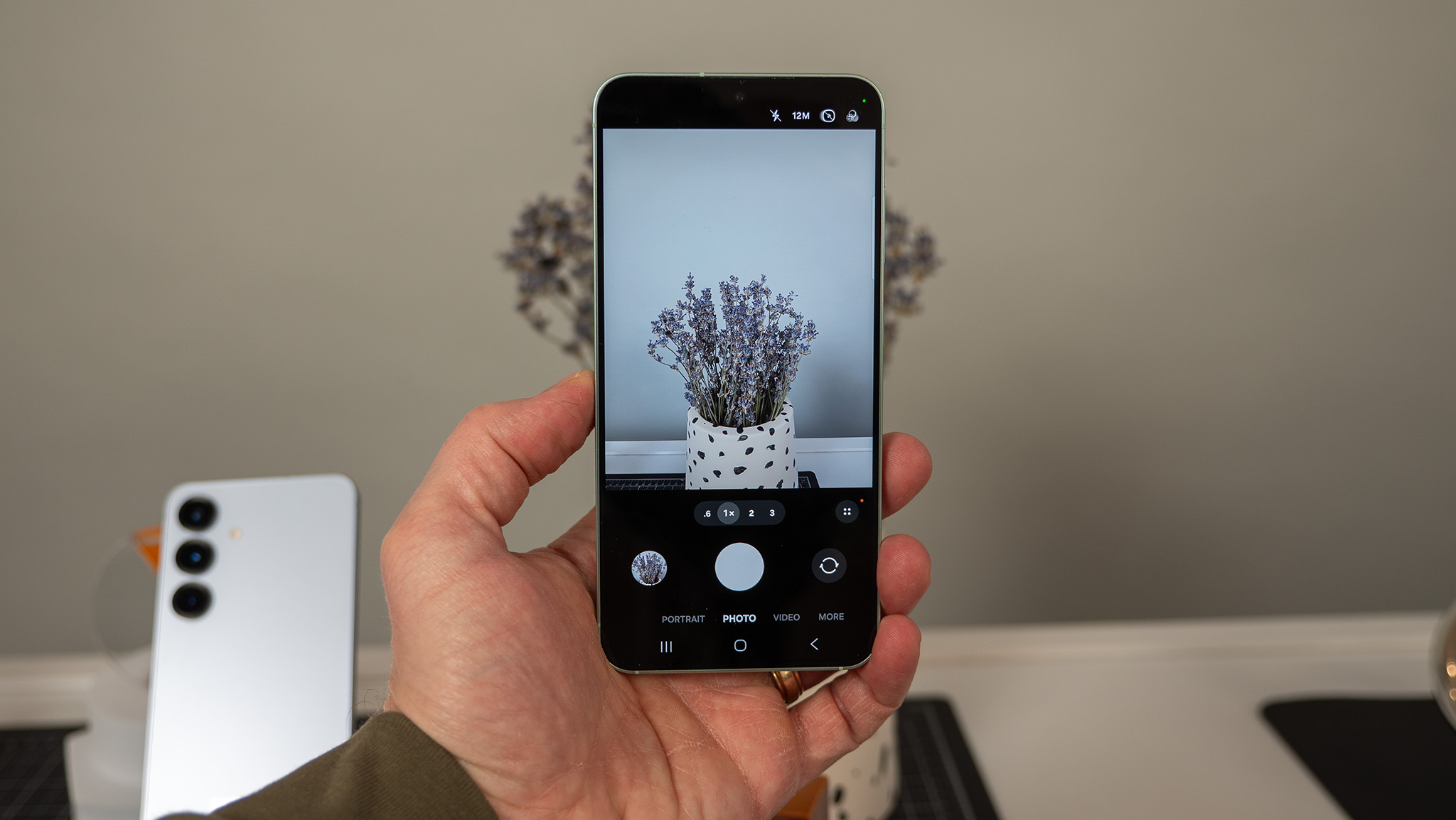
New photo and video editing options are the main draw of the Galaxy S25 and Galaxy S25 Plus's camera experience, as there have been no hardware changes this year.
A new auto button will use Galaxy AI to analyze a photo or video and give you direct a one-click editing suggestion. This should help better surface hidden features like reflection eraser and shadow eraser, as well as the new audio eraser for video.
That Audio Eraser tool one-ups Google's Magic Audio Eraser on the Pixel by remaining completely on-device. That means you don't have to subscribe to any service or let your data go to the cloud to use it. It was super fast in our testing and impressively separated each audio channel as the AI analyzed things like a person's voice, background noise, and others. Adjusting each channel was simple, thanks to the excellent UI design.
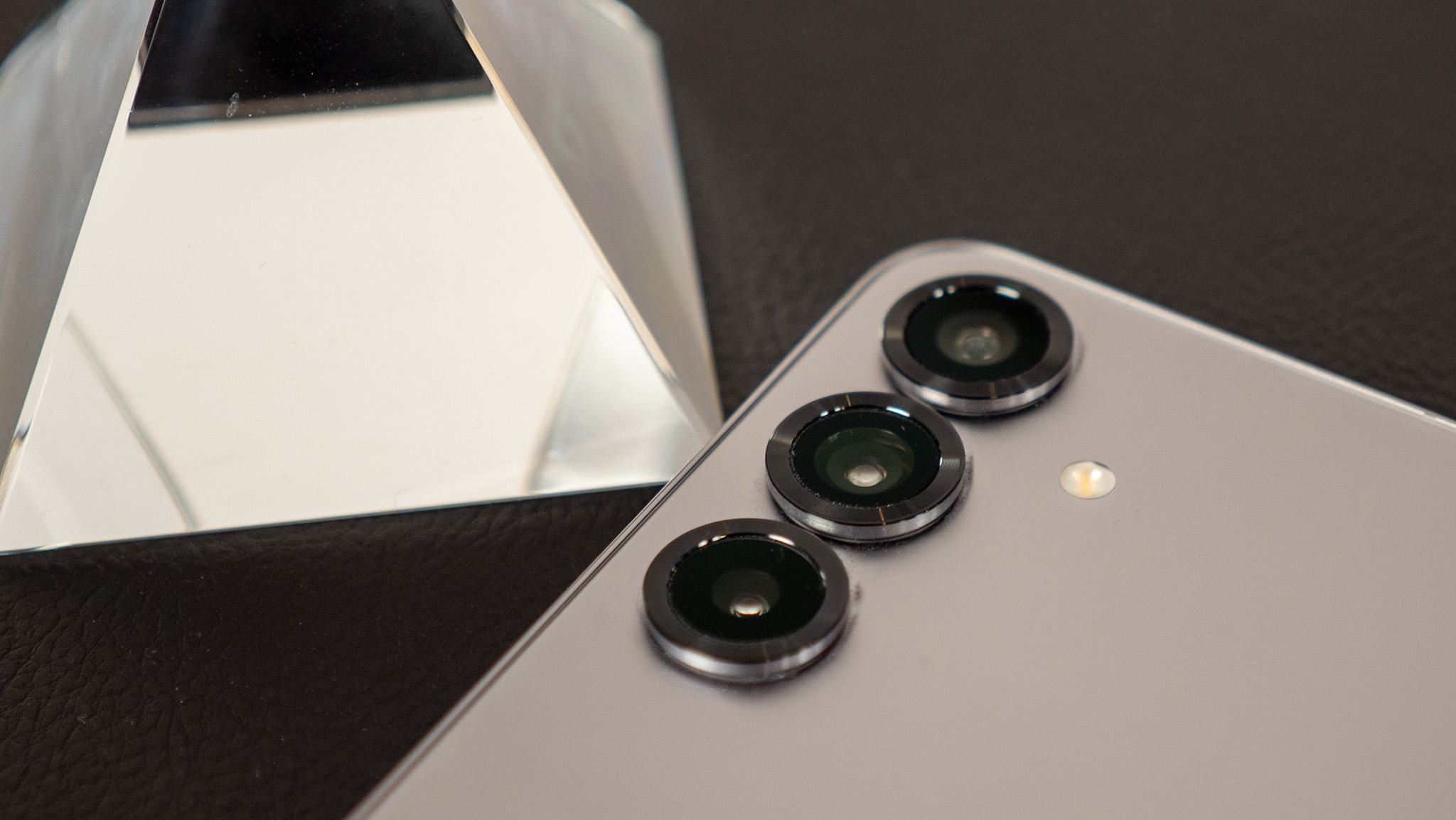
Portrait Studio now has more realistic portraits with better facial expressions and natural tones. You can still only select from four style options, so it's not exactly as full-featured as some of the similar apps you can find on the Play Store. Samsung keeps all that processing data local, though, so there's no worry about your face ending up in some database somewhere.
Pro mode has been enhanced with several new features including Galaxy LOG with exclusive LUTs. If you don't know what this is, you probably don't need it, but it's going to be an exciting addition for folks who love to capture video. Pro mode also has a new virtual aperture that lets you make photos or videos taken in pro mode look more like they came from a DSLR.
You can now capture 10-bit HDR video from all four cameras on either phone, adding a brilliant layer of shine to your videos.
Nighttime videos are also seeing some big improvements thanks to a new spatial-temporal filter that analyses each frame and separates moving objects from still objects in real-time. In effect, this means the phone should be able to better capture moving subjects while keeping the rest of the frame from becoming over or under-exposed.
It's a fascinating new concept in per-pixel image calculation that phones already do, this time exclusively for low-light video capture.
Samsung Galaxy S25 and S25 Plus: Should you buy it?
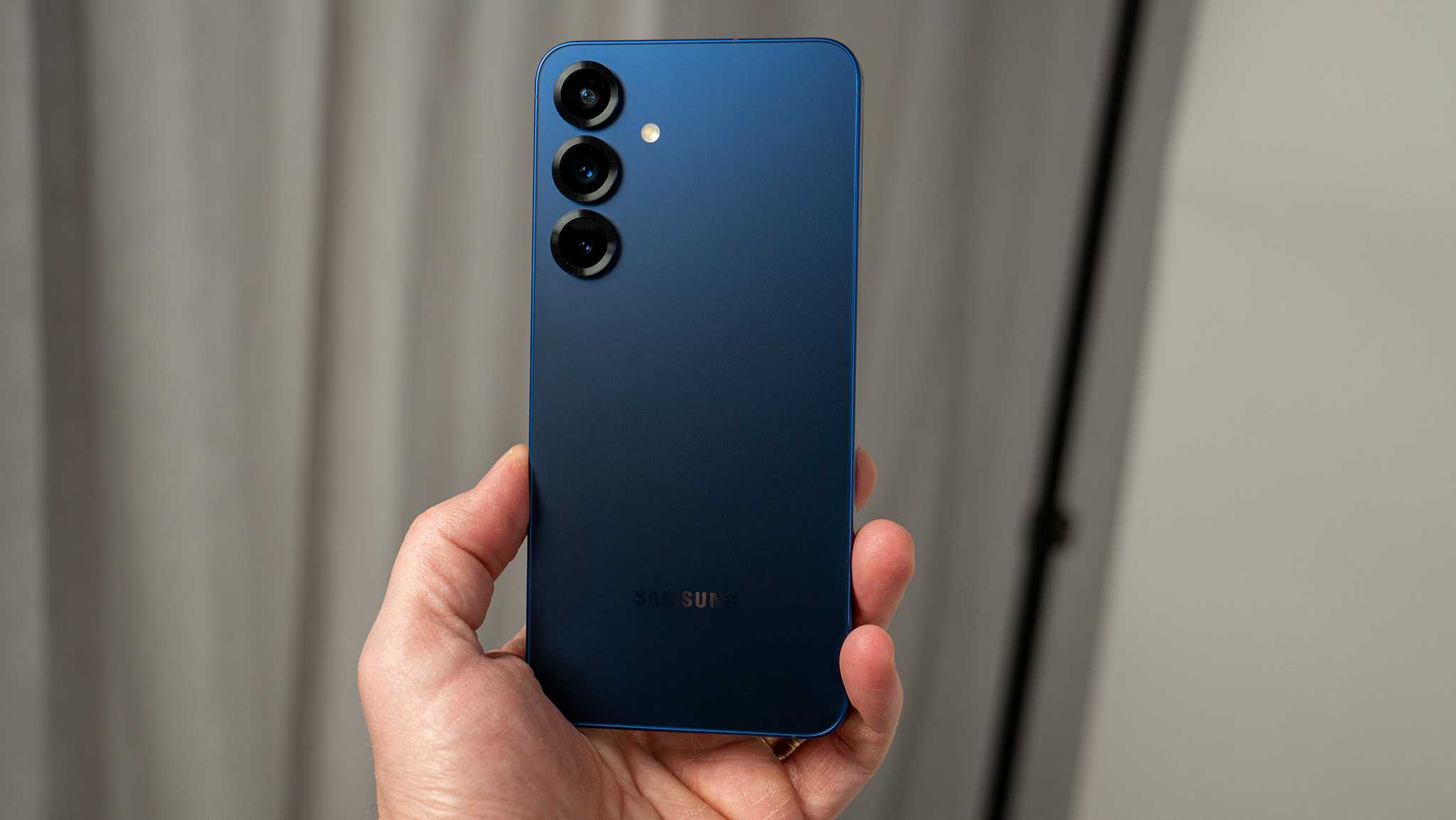
If you're coming from an older Galaxy S device, upgrading to the Galaxy S25 or Galaxy S25 Plus should be pretty amazing. You'll get the latest version of Android and tons of new AI features you didn't previously have, plus more RAM, a substantially faster processor, and a better camera experience than ever.
Samsung isn't changing what has been working for the company which means this is yet another iterative update over last year. Throughout the product briefing, Samsung talked about how customers coming from the Galaxy S21, S22, or even the Galaxy S23 series will see significant improvements in everyday use with the Galaxy S25 series. That's key to understanding if the Galaxy S25 is the right phone for you, as it's not terribly exciting year-over-year but looks quite attractive if you're coming from something much older.
Based on my hands-on time, these seem like solid flagship phones that are even more attractive since Samsung boosted important specs — like RAM — matching that of the Galaxy S25 Ultra, all without raising the price. Plus, with seven years of software upgrade support, there won't be much of a reason to upgrade for a long time, especially if Samsung continues to deliver iterative upgrades like this each year.







